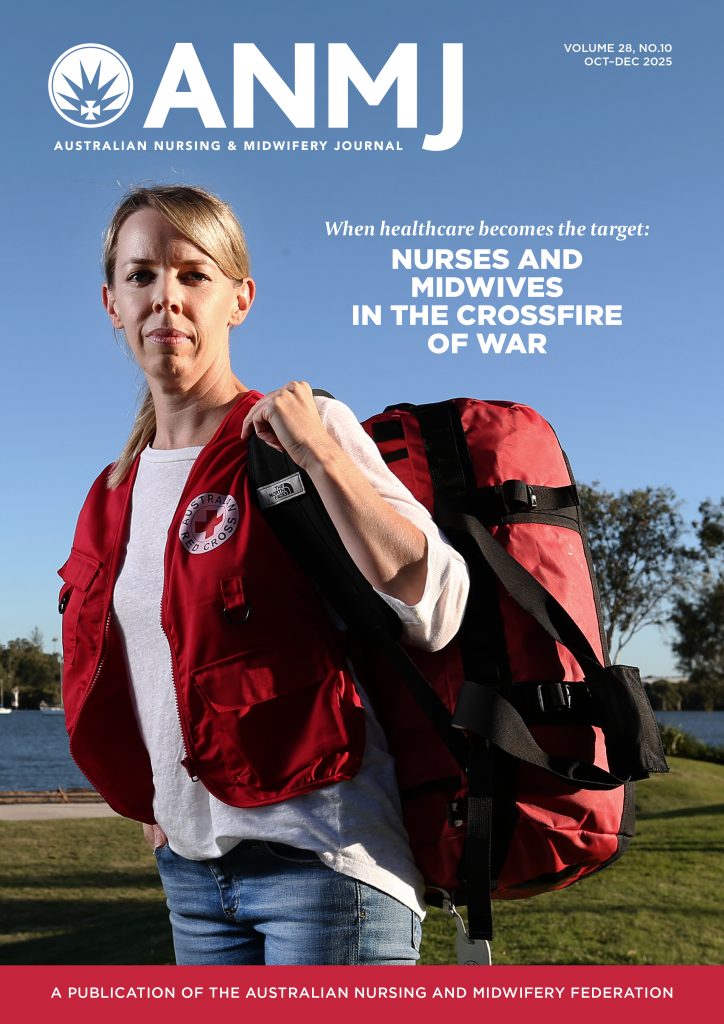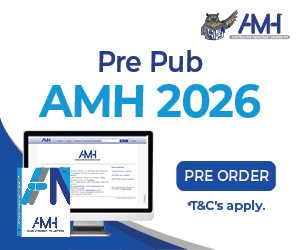Tenacity, an inquiring mind and a commitment to making a difference in the lives of patients are some of the key attributes personified by nurse practitioners, says aged care NP Kaye Coates.
“It’s being able to see the bigger picture, the whole person, not just going in to put a Band-Aid on a particular issue that has arisen, but going back to look at the history of what’s been occurring over a period of time and then getting to the bottom of what the problem is before coming up with management or treatment for it.”
Nurse Practitioner Day is celebrated on 12 December each year to mark the endorsement of the first NPs in Australia – Sue Denison and Jane O’Connell – back in 2000.
Next year marks the 20th anniversary of the landmark event and the Australian College of Nurse Practitioners (ACNP) is hoping to reach the target of 2,000 NPs across the country.
“It’s another way to bring NPs together and help support one another,” says Kaye about Nurse Practitioner Day, adding that pioneers before her helped pave the way for the advanced practice role she relishes.
“Just being able to get to the bottom of the story,” she says when asked what she loves most about the job.
“I’m somebody that doesn’t like to settle for mediocre. I’ve got to know we’re giving people the best information we can so that they can make informed decisions.
“I love the relationship building and the trust you can gain from that. I love having that direct contact with people.”
Kaye was working in the acute sector in Queensland on the hospital ward when a friend working in aged care encouraged her to apply for a community care manager role in the sector.
She was successful and the role quickly gave her an insight into various areas of need.
“That was where I first became aware of a service gap for elderly people in the general community that couldn’t access a GP because they didn’t have transport or when they were crook were too unwell to drive,” Kaye recalls.
“We had deteriorating residents in the home setting that refused to go to hospital and it was a big concern that they couldn’t get some primary healthcare until they started to deteriorate. So I thought we need nurse practitioners in this role.”
The lightbulb moment motivated Kaye to undertake nurse practitioner studies in a bid to boost her qualifications and improve the breadth and level of care in residential aged care.
Early on in the process, she was able to put forth a proposal for a research grant that connected her with the innovative Geriatric Emergency Department Intervention (GEDI) team and would allow her to continue her studies and be part of a larger research project examining the nurse practitioner role in aged care and its impact on reducing hospital admissions.
The team secured a $1.15 million grant through the Department of Health and Ageing (DoHa) to undertake the Care Coordination through Emergency Department, Residential Aged Care and Primary Health Collaboration (CEDRiC) project.
It allowed Kaye to step into a full-time NP candidate role and take up additional learning opportunities, such as visiting the Emergency Department with the GEDI Team, and being mentored by an ED physician.
After becoming a fully-fledged NP and returning to the aged care sector, Kaye worked across a variety of facilities delivering care.
She suggests the impact made as a nurse practitioner was immediate.
Improvements included an increase in advance care planning across the facilities through “on the floor” education.
“There was no big difficult process to refer to me, they’d just ring me up and let me know there was someone who was a bit unwell. I would also do rounds and pick up on people who were deteriorating too, as well as speaking to the carers.”
Despite inroads, Kaye suggests NPs are underutilised in aged care and that it is important to advocate for the advanced practice role within the sector because of the expertise they can bring when dealing with a variety of complex health conditions.
She recounts one example, where she was asked to see a man because he had vomited the previous morning and twice on this particular day.
Looking over his history, she found he had recorded a high INR reading two weeks prior, meaning his blood was thin.
She also noticed the man was also more offbeat than usual and had a small scratch on his head.
With the information at hand, Kaye suggested a cerebral bleed couldn’t be ruled out and after liaising with the GP the patient was sent off to hospital and she was proven correct.
“That man was having a slow bleed on the brain causing the increased pressure,” Kaye says.
“Even though he didn’t want treatment for that, what it did allow was for him to know what was going on, his family were able to be informed and together they could make an informed choice about what was to happen next.
“He came back to the facility, he had medication written up in the event he started to become distressed, and he was transferred to a higher support area, which was a little bit unfortunate because he passed away at 7 o’clock that night. But the whole thing was controlled and the decisions were made. The family weren’t burdened by having to make a last-minute decision once he was really deteriorating.”
In her current role, Kaye is a regional manager for Bolton Clarke, overseeing 12 residential aged care facilities.
She is a resource and support for managers and the objective is high-quality care for residents and staff feeling motivated and valued.
“We’re dealing with every aspect of our residents’ lives,” she says.
“We’re dealing with all the staff on the floor and any concerns that family members might have as well so it’s a huge role and then there’s the maintenance side of things in ensuring the facilities are running well from day to day.”
As a senior manager, Kaye still uses her nurse practitioner skills, but in different ways.
“If somebody’s got a concern about something, it could be a staff member that feels a resident is deteriorating and whatever they’re trying isn’t working, then I can delve into the history, talk it through with them, make some suggestions and liaise with GPs if they need me to.
“The other side is if a customer is concerned or a family member is concerned then I can delve in similarly and apply my knowledge to that as well and refer to other people as required.”
Kaye would like to see more nurse practitioners working in aged care but says financial viability remains one of the biggest challenges.
The road ahead for NPs is promising but there’s still a long way to go until NPs can work to their full scope and maximise their contributions to healthcare.
“We need greater recognition, acceptance and understanding,” she says.
“People need to know that there’s the potential option out there, that NPs are not doctors, they’re nurses with high levels of skills that can provide really great quality outcomes for people, particularly if their setting is onw where there is not necessarily timely access to GPs or frequent GP contact.
“You have to remember that nurse practitioner roles arise out of a need. There’s a need or there’s a gap.”








